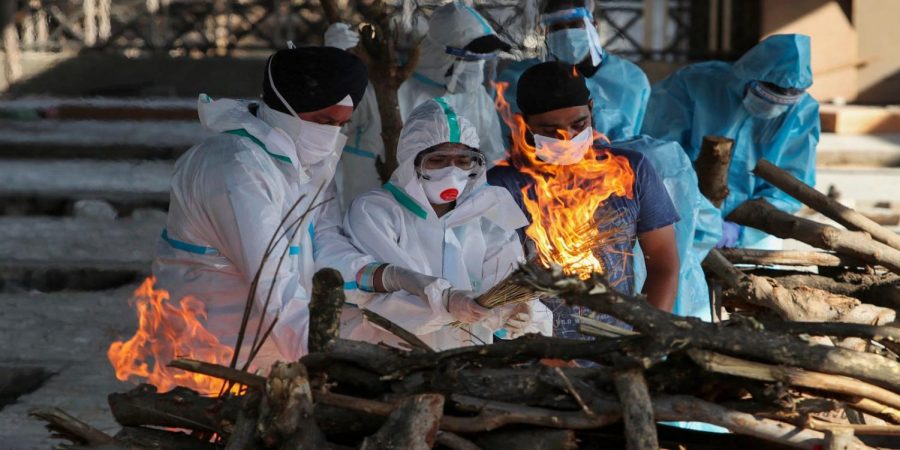India’s crushing COVID-19 is the result of a “perfect storm” of factors experts say
India’s caseload is growing exponentially, and its health care system is overwhelmed. “It’s almost like India hit a perfect storm,” said S.V. Subramanian.
April 30, 2021
Last March, when COVID-19 arrived in India, the country of 1.4 billion people quickly went into lockdown for two months, keeping infection rates under tight control. There was a spike in September, but the numbers came back down.
By February, cases were at an all-time low and the country began relaxing, thinking it had overcome the virus, said Dr. Amita Gupta, an infectious disease specialist. People started attending cricket games, religious festivals and weddings. “There was essentially a lot of relaxation of rules,” she said.
In February, there were about 350,000 coronavirus cases in India and 2,670 deaths. So far this month, there have been more than 3 million cases, nine times increase, and 17,000 deaths, according to data Subramanian tracks at Harvard.
Now, the country’s caseload is growing exponentially, and its health care system is overwhelmed. “It’s almost like India hit a perfect storm,” said S.V. Subramanian, a professor of population health and geography.
India is so large that different factors may have played a role in different areas, and cities seem to be suffering more at the moment than rural areas, he said. But the combination has led to catastrophe. Lack of surveillance has been a problem in India, he said, making it impossible to understand which variants are there and how far they’ve spread.
Gupta and several other infectious disease experts said this week that a combination of political, biological, behavioral and meteorological factors led to the outbreak. “Hospitals full and having no beds – They’re in a war mentality,” Gupta said. Even train cars and hotels are being converted into hospitals.
India’s prime minister has pleaded for help, and other nations, including the United States, have responded. Shipments of oxygen tanks and devices for making oxygen should be on their way to India within the next week and also medications that help COVID-19 patients recover faster will be sent soon. “We are sending immediately a whole series of help that India needs,” President Joe Biden said Tuesday.
The administration also has promised to send supplies for Indian vaccine production and 60 million doses of vaccine made by AstraZeneca, which the U.S. government pre-purchased last year but doesn’t need to vaccinate Americans.
Roughly 10% of Indians have been vaccinated so far with large-scale production and distribution underway in a country well versed in running mass vaccination campaigns. On May 1, every adult will be eligible for a vaccine, she said. But even at the current delivery rate of about 2 million shots a day the population is so large it will take time to vaccinate enough people to help infection rates fall.


